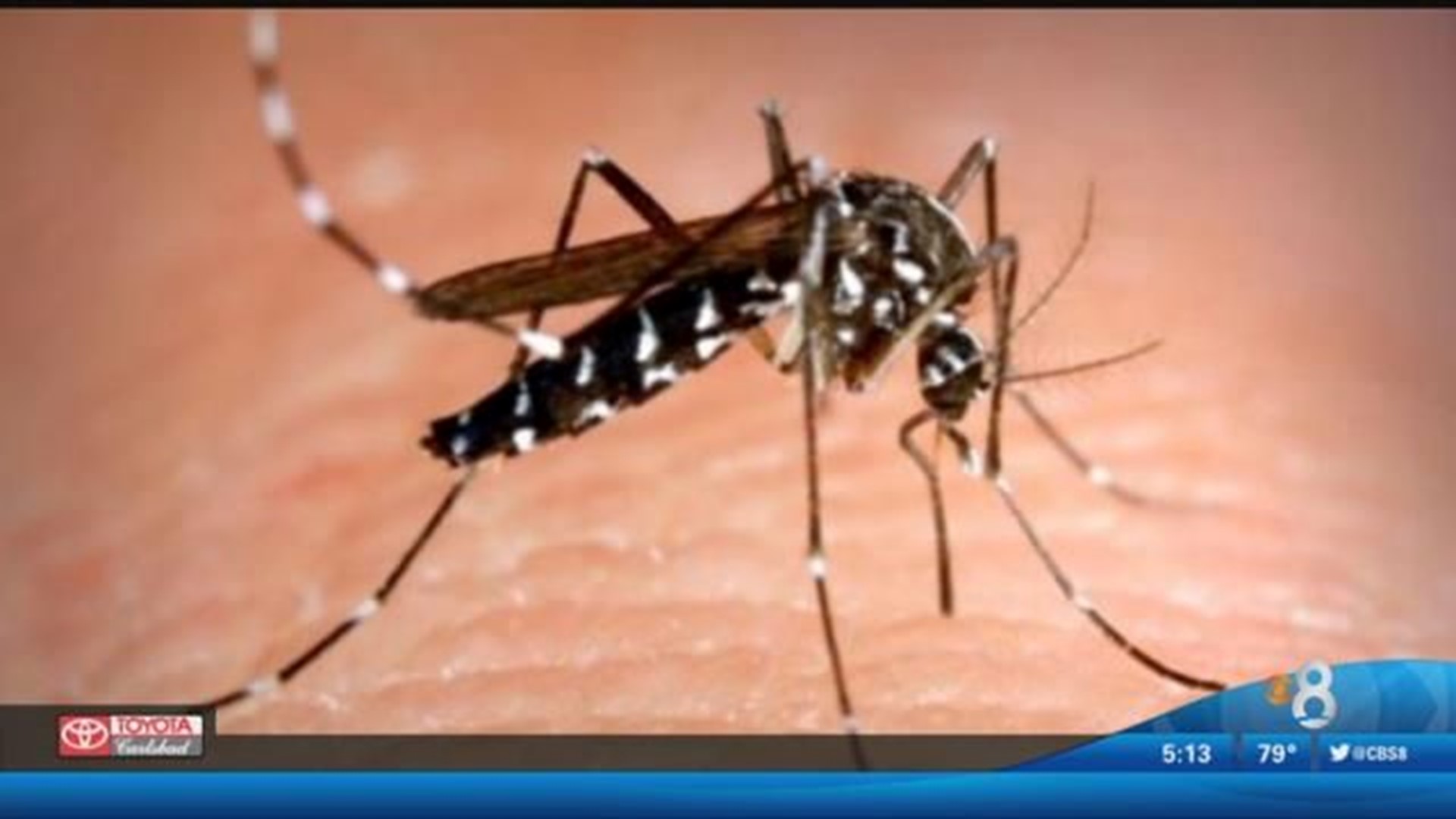SAN DIEGO (CNS) - An invasive mosquito thought to have been eradicated from the San Diego region 14 years ago was found during routine trapping in Barrio Logan, the county Department of Environmental Health reported today.
The Asian tiger mosquito is similar to another insect found locally for the first time last year, the Aedes aegypti, sometimes called the yellow fever
mosquito.
Both mosquitoes are small with distinctive black and white markings, like living in urban areas and indoors, and generally feed during daylight
hours, according to the DEH. Native mosquitoes like to feed at dusk and dawn.
The agency said the mosquitoes can breed in very small amounts of water inside and outside of homes, like flowerpots, saucers and tires.
The Asian tiger mosquito and the yellow fever mosquito are capable of transmitting diseases like yellow fever, chikungunya and dengue fever to people, but those tropical illnesses are only seen in San Diego County when travelers contract them elsewhere and return here.
Because of their disease-carrying potential, officials are trying to prevent the mosquitoes from establishing themselves in the state. They're
asking residents to dump out any standing water inside and outside their homes, and report to county vector control if they're bitten indoors during daytime.
According to the DEH, the Asian tiger mosquito, native to tropical and subtropical Southeast Asia, was first found in Southern California in 2001 and
was believed to have hitchhiked its way in on imported nursery items. San Diego County officials believed they had eradicated the insect that year.
The pest has infested communities in Los Angeles County and has been spreading in the last year and a half, according to the agency.
San Diego County vector control teams have been putting up additional monitoring traps for the mosquito near where it was found and handing out
information to urge the public to be on the lookout for the pest and eliminate standing water.

